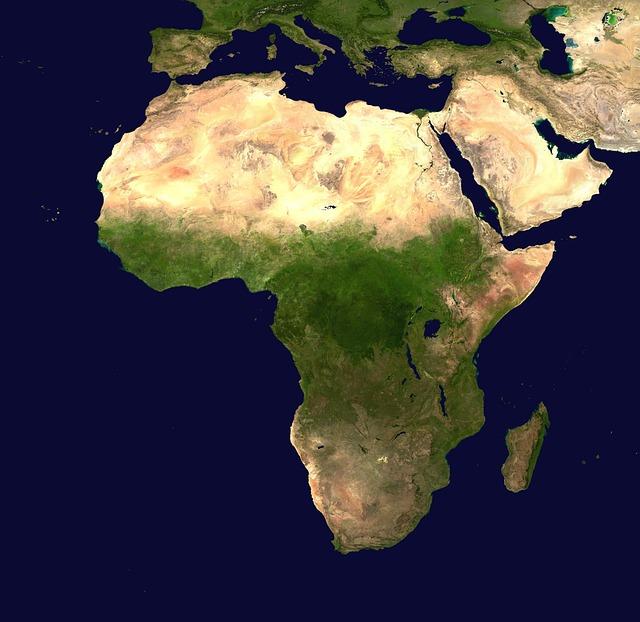Why Togo Is Becoming a Key U.S. Partner in Securing the Sahel Region
As global geopolitical currents shift and security threats intensify across West Africa, the United States is increasingly prioritizing its engagement in the Sahel-a vast, arid belt grappling with terrorism, organized crime, and political unrest. Among regional actors, Togo has emerged as a critical partner for Washington’s efforts to stabilize this volatile zone. Thanks to its strategic location and evolving defense capabilities, Togo offers an invaluable platform for advancing U.S. objectives aimed at countering multifaceted challenges in the Sahel. This article delves into why Togo matters strategically for American interests and how deepening cooperation can foster long-term peace and development.
The Strategic Value of Togo Within the Sahel Security Framework
The security environment across the Sahel has grown increasingly precarious due to escalating extremist violence and fragile governance structures. Positioned along West Africa’s southern edge near conflict-affected neighbors like Burkina Faso and Mali, Togo occupies a unique geographic niche that makes it indispensable for regional security initiatives.
Unlike many of its neighbors facing chronic instability, Togo benefits from relative political steadiness-an asset that enhances its reliability as a partner in intelligence sharing and military collaboration. Its active participation within ECOWAS (Economic Community of West African States) further underscores its commitment to collective security efforts.
- Geographic Proximity: Borders key hotspots where jihadist groups operate.
- Stable Governance: Maintains consistent political institutions amid regional turmoil.
- Security Engagement: Plays an active role in multinational peacekeeping missions.
- Crisis Response Hub: Serves as a logistical base supporting humanitarian operations throughout affected zones.
Togo’s potential extends beyond logistics; it can act as a diplomatic crossroads fostering dialogue among Sahelian states-helping ease tensions while building coalitions against shared threats. By conducting joint training exercises with Togolese forces and investing in their defense infrastructure, the U.S. stands to enhance both countries’ capacities while promoting sustainable development through targeted economic programs.
| Expected Impact | Description |
|---|---|
| Enhanced Security Capabilities | Togolese military better equipped to confront terrorist networks effectively. |
| Sustained Regional Stability | Create frameworks encouraging cooperation among neighboring states facing insurgency risks. |
| Easier Humanitarian Access | Adequate infrastructure enabling timely delivery of aid during crises such as droughts or displacement events. |
| Economic Development Boosts | Diversified investments leading to job creation through improved infrastructure projects linked with security goals. |
| Diplomatic Strengthening | Tighter bilateral relations facilitating broader multilateral partnerships across West Africa’s complex landscape. |
Cultivating Deeper US-Togolese Cooperation: Pathways Forward
The partnership between Washington and Lomé presents promising avenues for reinforcing stability throughout one of Africa’s most dynamic yet vulnerable regions-the Sahel corridor stretching from Senegal eastward toward Chad. To maximize impact on counterterrorism efforts while fostering resilience against destabilizing forces requires multi-dimensional collaboration including:
- Synchronized Military Drills: Enhancing interoperability between U.S. forces and Togolese troops through regular joint exercises focused on rapid response tactics;
- Tactical Intelligence Exchange: Establishing secure channels for real-time information sharing about extremist movements;
- < strong > Capacity Enhancement Programs: strong > Providing advanced training & resources tailored toward local law enforcement agencies strengthening border control & internal security; li >
- < strong > Economic Partnerships: strong > Investing strategically into sectors such as agriculture modernization (e.g., precision farming technologies), transport infrastructure upgrades (roads/telecom), plus vocational education initiatives targeting youth employment growth; li >
- < strong > Community Engagement Initiatives: strong > Collaborating with NGOs & grassroots organizations aiming at social cohesion & counter-radicalization campaigns within vulnerable populations . li >
| Modern equipment adoption; irrigation systems;< td/> | Road network expansion; digital connectivity improvements;< td /> | Skills training centers; literacy programs;< td /> |
This comprehensive approach not only strengthens immediate defense capabilities but also addresses root causes fueling insecurity by improving livelihoods – thereby creating conditions conducive to lasting peace throughout West Africa’s fragile zones.< / p >
A United Front Against Extremism: Leveraging Regional Alliances Through Togo’s Role < / h2 >
The rise of violent extremism remains one of the gravest threats confronting both local populations within the Sahel region-and international stakeholders invested in global stability.< p />
Tackling this menace demands robust partnerships spanning governments, civil society actors,and foreign allies like the United States-with Togo positioned centrally due to its geographic advantage combined with diplomatic openness.< p />
- – Pooled Intelligence Networks : Encouraging transparent data exchange mechanisms regarding militant activities enables faster threat identification. – Security Force Empowerment : Providing specialized training alongside material support equips frontline units better prepared &amp;amp;amp;amp;amp;amp;amp;;lt;/Li>
</Ul>
<p>- 
n n n n n nnnnn n n n n
Priority Area
Recommended Actions
rn Education rn Lancu00e9r des programmes pour augmenter l’alphabu00e9tisation et la formation professionnelle. rn rn rn rn

